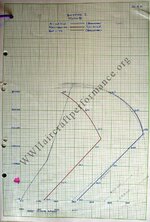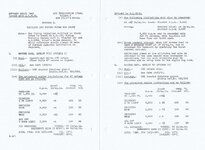D Dave Smith raised the question of believing the official docs in a strict fashion.
We've had a discussion about this official document before, for example. The Mustang (Mk.I) is noted to be powered by Allison V-1710 F32 engine - not the case, since the engine on the MkI was F3R; the F32 (actually the F32R) was a 2-stage 3200 rpm engine with intercooler from 1945, for the XP-51J 'lightweight' Mustang.
Doc also states the power delivered at 19000 ft as being 1150 HP - again not true, engine on the MkI was making that kind of power at ~12000 ft; by 19000, it was much less, even with ram effect calculated in.
My point - reader's discretion is as advised as ever.
Two points :
- As shown below, increasing the maximum boost on Merlin III gave better performance ONLY at low altitudes - see this graph: max speed at 18,500 feet is the same at 6.25 - 12 - 16 psi boost. Why ? Simply because these three numbers are just three different limiter setting, in all cases the supercharger is the same and gives its maximum at 18,500 feet.
Achieving 1010 hp at 21,000 feet with a displacement of 21 liters would have required a two-stage supercharger which was not available (for the Merlin) until the end of 1941. At that time, development of the Peregrine was abandoned.
- Do not forget either that the main problem of the Whirlwind was its small size which made it unable to receive large diameter propellers, essential to really absorb greater power. Correcting this drawback would have required redesigning the entire wing and engine installation, i.e. 80% of the plane.


